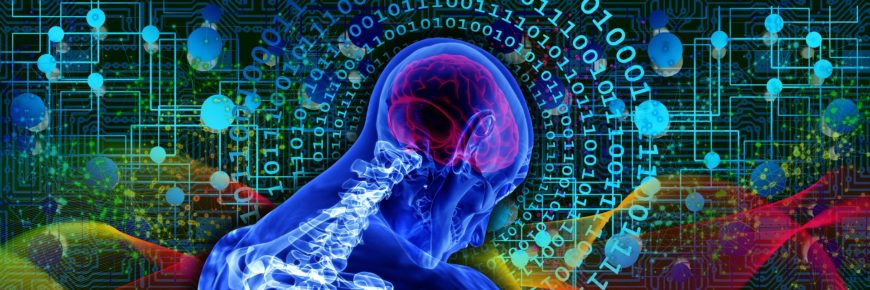Artificial intelligence (AI) has been the promise of healthcare for nearly a decade, but the industry has yet to adopt it widely. Applications of AI in arguably more difficult domains, such as search, language and image recognition, have seen massive success over the past decade. While neural net algorithms and compute power have improved dramatically, AI in healthcare is still lagging behind. The big reason these domains, and not healthcare, have been able to utilize AI tech is due to the internet’s ability to make massive amounts of data available. Now data access via internet technologies is finally happening in healthcare through secure channels.
Driven primarily through government regulation mandating standards for interpretability, healthcare is beginning to see data move through the same pipelines and formats as the rest of the Internet. Over the past five years, a mounting set of policies have pushed interoperability for the patient’s benefit. The 21st Century Cures Act Final Rule from the ONC was introduced to improve data access to provider and clinical data. For health insurance plans, the Interoperability and Patient Access rule covers financial and clinical data. Both of these require a new standard called FHIR (Fast Health Interoperable Resources), which spans the broadest set of data ever included in a single healthcare format. FHIR also utilizes consistent methods to transact that data via RESTful APIs and OAuth2, which much of the internet’s websites and apps use to share and secure information. These patient-directed improvements present a waterfall of downstream effects, which regulators understand, but the industry is yet to capitalize on fully.
By virtue of being a broad and open standard, FHIR is bringing many previously disconnected healthcare data types together—most notably claims and clinical data from insurance and doctors respectively. Although claims and clinical are not the full picture, they are two fundamental parts of a patient’s health that have historically been separate and the standard still allows for social determinants of health, sensor data and other wellness information. FHIR is also breaking barriers to create massive data sets, combining information from disparate providers and health insurance plans and enabling organizations to unify the fragmented views they have of patients today. In this new world, AI researchers can finally train on complete patient data sets, including financial and clinical data from all providers and health insurance plans the patient has interacted with.
Unified data begins to open up the possibility for more accurate AI models that have the ability to see that a patient discharged from one hospital was readmitted to another two months after switching health insurance plans. In addition to a better longitudinal view, the importance of financial claims and clinical data coming together is driven largely by the fact that, in the U.S., without vertically integrated payment and care systems, you need to know what you are getting for your dollar. Now, with more complete data spanning financial and clinical interactions, AI models will be able to tell a health plan or patient the actual quality or value to be expected when seeing doctor A for a procedure versus doctor B using data amassed from thousands of encounters.
Of course, you don’t need AI models to see benefits from this more informed world in healthcare. You could make improvements using traditional analytics approaches, but AI allows for the nuances in the data to precipitate. AI models can account for nonlinear interaction effects among thousands of variables, like those of medical coding terminology systems that categorize conditions, procedures and medications. AI can generalize to many types of problems without requiring an analyst to build specific models for risk, quality, cost, network leakage, etc. And finally, with sufficient data, they can perform much more accurately than traditional analytics.
The signs of successful neural-network-based AI models in healthcare are beginning to appear. This, however, is not happening within isolated entities. It’s largely emerging from data-sharing partnerships or through technology solutions that are building on FHIR and connecting claims and clinical data sets. There are a few organizations that have the potential to win AI in healthcare and bring the tech to the masses. Those are large hospital systems, health insurance plans and data platforms (including electronic health record companies, cloud providers and healthcare data platforms). Data from tens of millions of patients under management will be required, limiting the pool potential solutions to a few dozen.
In an effort to embrace AI, healthcare organizations must think about data first. The vast majority of AI is data engineering, governance and structure. Only a small portion of it is the actual analytics or the neural network model. Thinking data-first can be broken down into three core tenants: compute, connectivity and ontrol. Compute is all the infrastructure that enables you to interact with data deftly—to strucure it, house it and modify it. Connectivity to external payers or providers, internal analytics or other enterprise vendors allows healthcare systems to see beyond their own walls and truly amass more information than was possible alone. Finally, control ensures an organization can secure and govern access to data that is most sensitive. Together, these set a foundation for AI in healthcare that all organizations considering the technology should prioritize.
Both the risk and the reward are massive for those that become dominant AI companies in healthcare. Clearly, there is the risk of missing or overdiagnosing life-threatening ailments, where missteps can and already have led to death. But there is also the reward of beginning to automate and better solve a broad swath of problems in which we value direction of care from nurses, doctors and analysts in the hundreds of billions of dollars. Fundamentally, AI algorithms are able to learn from and act on more information than any individual human. Now in healthcare, we are finally starting to see that information become available in a secure and computable form.

